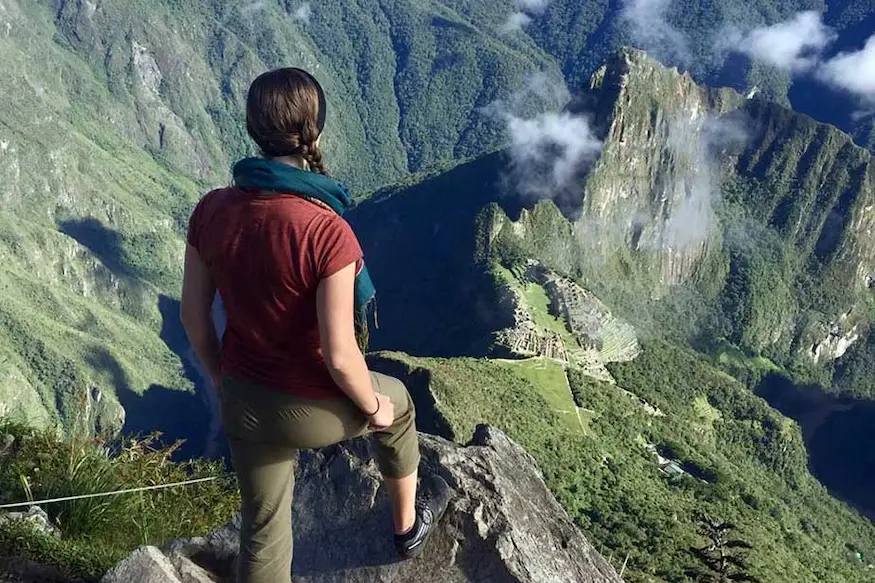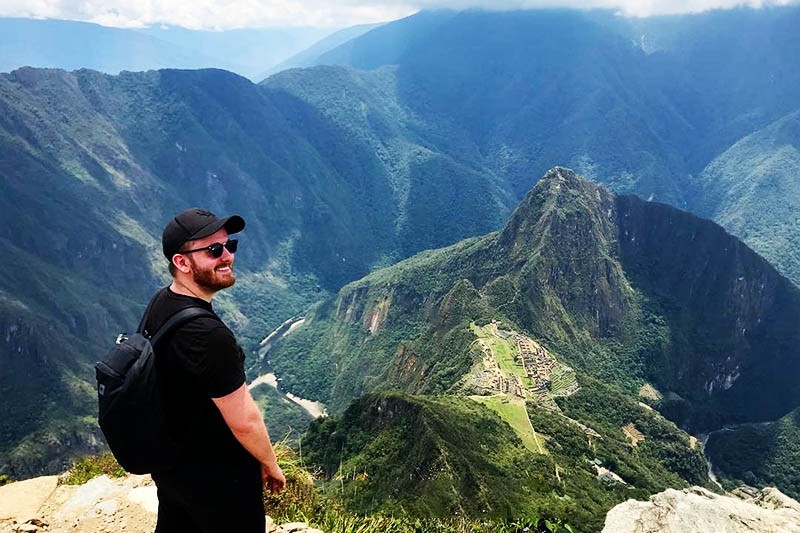Machu Picchu Mountain
If you’re visiting the magical archaeological site of Machu Picchu, there’s one experience that offers even more breathtaking views: climbing Machu Picchu Mountain. This towering peak, located in the Historic Sanctuary of Machu Picchu, rises high above the Inca citadel, giving hikers a stunning panorama of the surrounding landscape. In this guide, we’ll explore everything you need to know about climbing Machu Picchu Mountain, from buying your ticket in advance to the best times to visit.
What is Machu Picchu Mountain?
Machu Picchu Mountain, also known as “Montaña Machu Picchu,” is one of the towering peaks that surrounds the archaeological site of Machu Picchu. Standing at about 3,082 meters (10,111 feet) above sea level, it offers unparalleled views of Machu Picchu and the Urubamba River far below. Unlike the smaller but steeper Huayna Picchu Mountain, Machu Picchu Mountain provides a less challenging, yet equally rewarding hike.
This mountain offers a different perspective of the Inca citadel of Machu. From the summit, you can see the vast cloud forest, nearby peaks, and the sprawling ruins below, all while surrounded by the tranquility of nature.

Tickets and How to Book in Advance
Climbing Machu Picchu Mountain requires a special Machu Picchu Mountain ticket, separate from the standard tickets to Machu Picchu. Since spaces are limited and the climb is a popular activity, it’s crucial to purchase your ticket in advance. You can either buy it online or through an authorized tour operator, but it’s recommended to book several months ahead, especially if you plan to visit during the dry season or peak months like April, May, September, October, and November.
When you purchase a Machu Picchu Mountain ticket, you’ll be assigned a time slot for your climb, either from 7:00 am to 8:00 am or 9:00 am to 10:00 am. These early morning climbs give you the chance to explore the trail before it gets too crowded or too hot.
When to Visit Machu Picchu Mountain
The best times to visit Machu Picchu and hike the mountain are during the dry season, from April to October. These months offer clearer skies, making it easier to enjoy the views of the surrounding mountains and the Inca citadel. Though it’s technically possible to hike in the rainy season (November to March), you may experience slippery trails and cloudy conditions that can obscure the beautiful scenery.
If you’re planning your visit, try to aim for April, May, September, October, or November, when the weather is typically milder, and there are fewer tourists.
The Hike: What to Expect
The climb up Machu Picchu Mountain is a moderate-to-difficult trek that takes around 2 to 3 hours to reach the summit. The trail is well-marked but steep, with many stone steps leading the way. It can be a bit challenging due to the altitude, but with patience and breaks, it’s achievable for most hikers.
At the summit, you’ll be rewarded with panoramic views of Machu Picchu, the Urubamba River, and the surrounding mountains. On a clear day, the sight is breathtaking and well worth the effort.
Remember to pack water, snacks, and wear comfortable hiking shoes. The temperatures can change quickly, especially at higher altitudes, so bring layers to stay warm. Don’t forget sunscreen and a hat, as the sun can be intense even in the early morning.
Huayna Picchu vs. Machu Picchu Mountain
Many visitors to Machu Picchu are torn between climbing Huayna Picchu Mountain or Machu Picchu Mountain. While both offer stunning views, they are quite different experiences.
Huayna Picchu Mountain: Known for its steep, narrow paths and the Inca ruins along the way, this is a more challenging and adventurous hike. The summit stands at 2,720 meters (8,923 feet) above sea level, and the trail includes the infamous “Stairs of Death.” The climb is shorter but more intense.
Machu Picchu Mountain: This hike is less steep and longer but offers a higher vantage point. It’s ideal for those who want to take their time, enjoy the scenery, and avoid the more extreme challenges of Huayna Picchu.

Both hikes require separate tickets, so if you’re planning on doing one, make sure to book early!
Flora and Fauna Along the Trail
As you hike Machu Picchu Mountain, you’ll pass through the rich cloud forest that surrounds the site. This forest is home to a variety of plants and animals, including orchids, butterflies, and colorful birds. Keep an eye out for the Andean cock-of-the-rock, Peru’s national bird, as well as the many unique plant species that thrive in the misty environment.
The cloud forest adds to the mystical atmosphere of the hike, making the journey just as beautiful as the destination.
What You Need to Know Before You Go
Altitude: The climb to Machu Picchu Mountain takes you up to over 3,000 meters, so be prepared for potential altitude sickness. Take it slow, stay hydrated, and allow yourself a few days in Cusco to acclimatize before the hike.
Weather: The weather can change quickly on the mountain, especially during the rainy season. Even in the dry season, it’s a good idea to bring a light rain jacket and be prepared for cooler temperatures at the top.
Permits: Make sure to buy your Machu Picchu Mountain ticket well in advance to secure your spot, as the number of hikers is limited each day.
Why Visit Machu Picchu Mountain?
Hiking Machu Picchu Mountain offers a sense of adventure and accomplishment that goes beyond just visiting the Inca citadel. The panoramic views from the top, combined with the peaceful surroundings of the cloud forest and surrounding mountains, create an unforgettable experience.
For those who want to explore the beauty of Machu Picchu from a different perspective, this mountain hike is a must.

FAQs
Which mountain is Machu Picchu on?
Machu Picchu Mountain refers to the higher peak located behind the Inca citadel. It’s often confused with Huayna Picchu, the smaller mountain on the opposite side.
How hard is it to climb Machu Picchu Mountain?
The hike is moderate to difficult due to the steep stone steps and the altitude. However, with a steady pace and breaks, most people can complete it in about 2 to 3 hours.
What is the difference between Machu Picchu and Machu Picchu Mountain?
Machu Picchu refers to the famous Inca citadel, while Machu Picchu Mountain is the peak that offers a higher vantage point for viewing the ruins and the surrounding landscape.
Is Machu Picchu Mountain worth it?
Absolutely! The views from the summit are breathtaking, and the sense of accomplishment after the hike makes it even more rewarding.
Which is harder, Machu Picchu Mountain or Huayna Picchu?
Huayna Picchu is generally considered more challenging due to its steeper and narrower paths. Machu Picchu Mountain is longer but less steep.
Why is Machu Picchu so special?
Machu Picchu is a marvel of Inca architecture, set in a breathtaking mountain landscape. Its historical significance and stunning beauty make it one of the most iconic sites in the world.
Why is Machu Picchu a 7 wonder?
Machu Picchu was named a New Seven Wonder of the World because of its remarkable construction, cultural significance, and its incredible natural surroundings. It’s a testament to the ingenuity of the Inca civilization.
Cusco - Machu Picchu
Cusco
Cusco
Cusco
Inca Trail hike
Inca Trail hike
Salkantay trekking
biking rafting zip line
Inca Trail
Inca Trail
